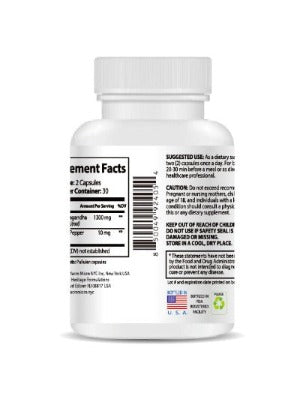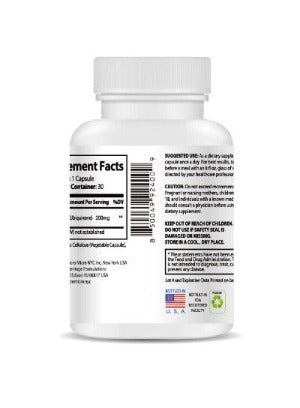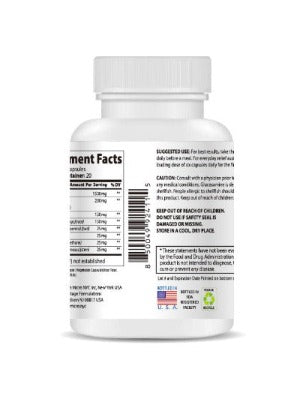The Role of Antihistamines in Allergic Conjunctivitis Management: A Comprehensive Guide
Allergic conjunctivitis, also known as allergic eye inflammation, is a prevalent condition affecting millions worldwide. Characterized by itching, redness, swelling, and watery eyes, it significantly impacts an individual's quality of life. Understanding the role of antihistamines in its management, alongside exploring complementary therapies, is crucial for effective relief and improved comfort. This comprehensive guide delves into the nuances of allergic conjunctivitis, the mechanisms of antihistamines, and explores how additional approaches can enhance treatment outcomes.
Understanding the Mechanisms of Allergic Conjunctivitis
Allergic conjunctivitis stems from an overactive immune response to common airborne allergens such as pollen, dust mites, pet dander, mold spores, and certain cosmetics or eye products. When these allergens come into contact with the conjunctiva—the delicate membrane lining the inner surface of the eyelids and covering the white part of the eye—the body's immune system initiates a cascade of reactions. This involves the release of inflammatory mediators, primarily histamine, which triggers the characteristic symptoms.
Histamine causes the dilation of blood vessels in the conjunctiva, leading to redness and swelling. It also stimulates nerve endings, resulting in intense itching. The increased permeability of blood vessels contributes to the watery discharge often associated with allergic conjunctivitis. This intricate inflammatory process underscores the need for effective management strategies targeting both the underlying cause and the resulting symptoms.
The Cornerstone of Treatment: Antihistamines
Antihistamines represent a cornerstone of allergic conjunctivitis treatment. These medications work by competitively blocking histamine receptors, preventing histamine from binding and initiating the inflammatory cascade. This results in a reduction of symptoms such as itching, redness, swelling, and tearing. Antihistamines are available in various forms, including eye drops and oral medications, each offering distinct advantages and considerations.
Ophthalmic antihistamines (eye drops): These are often the preferred route of administration for allergic conjunctivitis, as they directly target the affected area. They provide rapid relief from symptoms and minimize systemic side effects associated with oral medications. However, some individuals may experience temporary stinging or burning upon application.
Oral antihistamines: These are usually reserved for cases of more severe allergic conjunctivitis or when symptoms are widespread, affecting other parts of the body such as the nose or throat. Oral antihistamines offer broader relief but may be associated with drowsiness or other systemic side effects. Your doctor can help determine the appropriate dosage and type.
Beyond Antihistamines: Exploring Complementary Therapies
While antihistamines are highly effective in controlling allergic conjunctivitis symptoms, integrating complementary therapies can significantly enhance the overall treatment experience and improve patient comfort. These approaches often focus on reducing inflammation, soothing irritated tissues, and providing additional relief from discomfort. One effective approach incorporates soothing eye patches.
Harnessing the Power of Soothing Eye Patches: Introducing Wise Quest Soothing Eye Patches
For individuals seeking a gentle and effective way to complement their antihistamine regimen, Wise Quest Soothing Eye Patches offer a unique approach. These patches leverage the principles of traditional Chinese herbal medicine, combining carefully selected ingredients to address various aspects of eye discomfort.
These patches are designed to alleviate eye fatigue, dryness, astringency, redness, and swelling. By promoting healthy blood circulation in the eye area, they contribute to the overall reduction of inflammation and the soothing of irritated tissues. The gentle warmth and the comforting pressure exerted by the patches create a relaxing experience, providing additional relief and comfort to those struggling with allergic conjunctivitis. The unique formulation helps to calm the eye area, creating a more comfortable environment for the healing process.

A Holistic Approach to Allergic Conjunctivitis Management
Effective allergic conjunctivitis management requires a comprehensive and often personalized approach. While antihistamines form the cornerstone of treatment, incorporating complementary therapies like Wise Quest Soothing Eye Patches can significantly enhance the overall results. These patches offer a gentle yet powerful approach to soothing irritated eyes and promoting healing. The synergistic effect of antihistamines and soothing eye patches contributes to a more comprehensive and effective management strategy.
Remember, consistency is key when managing allergic conjunctivitis. Regular use of antihistamines, combined with the soothing effects of eye patches and any other recommended therapies, can help control symptoms and improve your overall quality of life. Always consult your doctor or ophthalmologist for personalized advice and to determine the most appropriate treatment plan tailored to your individual needs and the severity of your condition. This information is for general knowledge and does not substitute professional medical advice.
Frequently Asked Questions
- What are the common allergens that trigger allergic conjunctivitis? Common allergens include pollen, dust mites, pet dander, mold spores, and certain cosmetics or eye products.
- How do antihistamines work in managing allergic conjunctivitis? Antihistamines block histamine receptors, thus reducing inflammation and alleviating symptoms like itching and redness.
- What are the advantages of using ophthalmic antihistamines (eye drops)? Eye drops provide targeted relief, minimizing systemic side effects, and offer rapid symptom relief.
- How do Wise Quest Soothing Eye Patches complement antihistamine treatment? These patches soothe irritated eyes, reduce inflammation, and promote healing, enhancing the overall comfort and relief provided by antihistamines.
- Can I use Wise Quest Soothing Eye Patches with contact lenses? Always consult your eye doctor before using these patches with contact lenses.
- Are there any side effects associated with Wise Quest Soothing Eye Patches? Rarely, some individuals might experience mild skin reactions. Discontinue use and consult a doctor if irritation occurs.









